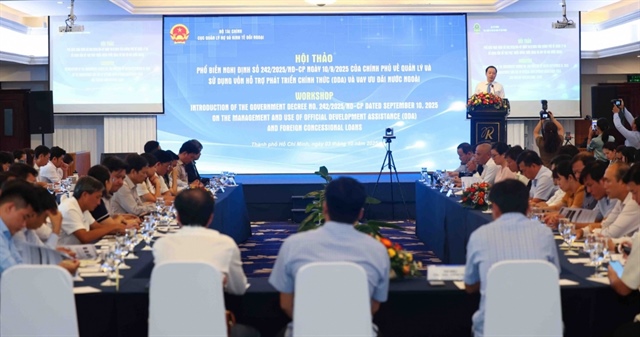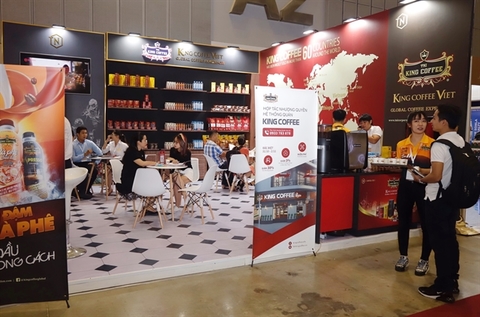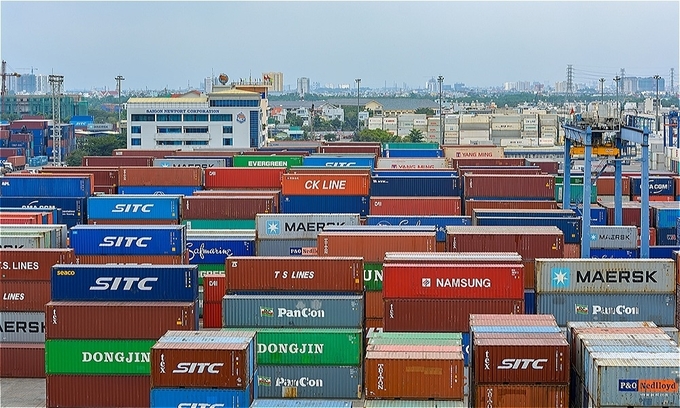Why international investors continue to flock to Vietnam
Why international investors continue to flock to Vietnam
After more than 30 years of adopting an open investment policy, Vietnam has become one of the most successful countries in the region in garnering overseas funding. Brian Spence, co-founder of investment consultancy S&P Investments, explains why foreign capital is increasingly attracted to Vietnam’s burgeoning charms, taking in the key drivers for the country’s meteoric ascent as well as some of the sectors that canny investors should keep an eye on.Whichever way you look at them, Vietnam’s key performance indicators tell a compelling investment story. Against a backdrop of social stability and government that is highly supportive of business, Vietnam is set to continue its multi-year run of 6-7 per cent annual GDP growth. And where South Korea and other Asian peers might be wincing from drops as large as 10 per cent, Vietnam has enjoyed an 8 per cent on-year increase in export growth.
Anyone needing further proof of Vietnam’s growing stature would have to look no further than the stunning rise of foreign direct investment. In 2018, FDI into Vietnam rose by 9.1 per cent on-year and hit $19.1 billion, marking this dynamic country’s sixth record year for FDI in a row. Almost 1,400 new related projects were registered by the summer of 2019, up nearly 70 per cent on the previous year, and the waves of capital keep flooding in.
Vietnam has since the late 1990s been pursuing a stable currency policy that has done much to encourage FDI. But the government’s commitment to keeping the currency on an even keel is just one of many factors that have turned the capital taps fully on, as well as maintained it.
The prospect of leveraging a young, well-educated, and highly motivated workforce at competitive wage rates is naturally a very attractive one, and particularly so where economic and social stability is also assured. Vietnam’s economy is on track to continue growing at 7 per cent every year, and the benefits of this boom have been widely felt. In contrast to less successful locations in the region, housing and living costs are reasonable and continue to track down as a proportion of wages.
The Vietnamese government has been incredibly supportive of business on both a small and large scale, and on domestic and international fronts. Entrepreneurship and innovation are thriving under Vietnam’s startup nation initiative, which is targeting one million new enterprises by the end of next year and, at the same time, the country has been busily forging international trade deals that are set to bear serious fruit.
Last year saw the inking of the Comprehensive and Progressive Agreement for Trans-Pacific Partnership and this summer saw the long-awaited EU-Vietnam Free Trade Agreement signed. This pact has been hailed by the EU as “the most ambitious free trade deal ever concluded with a developing country” and will pave the way for tariffs to be lifted on 99 per cent of goods moving between the two.
Perhaps just as vital are the rapid improvements being made to Vietnam’s legal and business framework as part of these deals, with greater protection of intellectual property rights being one important example. The Vietnamese government is more committed to raising the country’s standing on the world stage.
The workshop of Asia
So where is all this overseas investment going, and where does it come from?
Vietnam’s meteoric rise as a manufacturing hub off the back of increasing costs in China has been hard to miss, so it is perhaps no surprise that manufacturing and processing receive almost three-quarters of FDI currently (about $11 billion last year). This ascendancy looks sure to continue amid the US-China trade dispute and the massive investments being made into Vietnamese infrastructure.
Real estate is also seeing foreign inflows of over $1 billion a year which can only track up as tourism into the country increases and infrastructure improves. Close behind is retail and wholesale funding, a market which is expected to reach $180 billion by next year as a result of Vietnam having one of the fastest-growing middle classes in Asia. By 2020 many expect that it will have in fact doubled in size in just a decade, to include 33 million people. That is a lot of people ready to deploy, and enjoy, their new-found affluence.
Those sectors are just the top three, and there is a long and diverse tail of booming FDI recipients potential investors should have in mind, with science and technology being a major area. Just as diverse are the sources of this capital, with the big investors coming from the likes of Hong Kong, South Korea, Singapore, China, and Japan.
Serious money is also coming from outside Asia too: Swedish furniture giant IKEA plans a $450 million retail centre and warehouse system in Hanoi while Universal Alloy Corporation and Alton International Enterprises, both from the United States, have received the green light for production centres in the central city of Danang. The roll-call of cities and provinces becoming real destinations for international investment just grows and grows. If all this seems amazing, bear in mind that these are just a few strands of the narrative. Vietnam’s investment story is as multi-faceted as it is compelling.
Adjusting impressions
Incredibly, however, many of these movements seem to be passing many people by. On my travels it never fails to surprise me just how outdated most people’s notion of Vietnam is – even those who profess to be very internationally-minded business people. They may see the stellar growth, but not necessarily all the measures being put in place to support and sustain it long term. They may appreciate the country’s manifest dynamism, but not the diligence with which its future is being built up.
Indeed, many investment specialists looking at this region are now very much more focused on Vietnam than China as the “Asian Tiger” to watch. Not only is the country particularly geographically blessed, as the new container terminals at Haiphong Port and elsewhere attest. Wages in Vietnam are only a third of those in China. A million new Vietnamese workers being added each year should have investors’ ears pricked. The facts of the matter may take a little time to filter through to general consciousness, however. As we know, the reality gap between actual and assumed value is where profitability lies. But I predict it will not be long before Vietnam is no longer perceived to be a “frontier” at all.
That should spell opportunity to any ambitious investor – wherever in the world they may be.



















